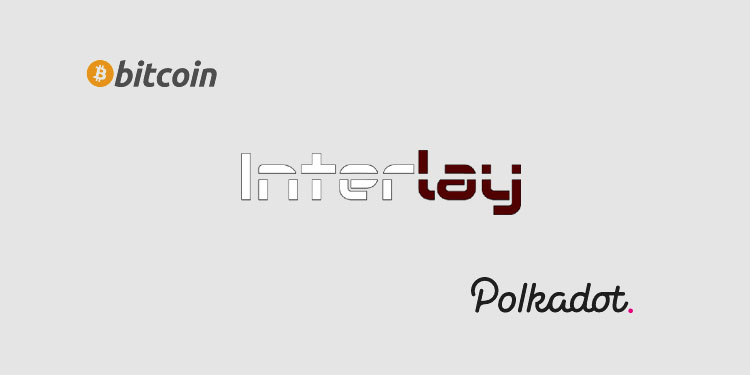Interlay, a protocol to unlock liquidity for DeFi platforms across blockchains, recently announced its work on bringing Bitcoin to the Polkadot ecosystem. Over the past months, the team at Interlay has been developing an in-depth technical specification for Bitcoin-backed assets on Polkadot.
This open-source R&D project, based on top-tier academic research, is funded by a Web3 Foundation grant. Interlay is now implementing a PoC for a BTC-Parachain in Substrate and Rust. XCLAIM, the framework underlying the BTC-Parachain; is a carefully designed, open and trustless system that leverages a dynamic set of collateralized intermediaries. Intermediaries are obligated to prove correct transaction execution on Bitcoin, which ensures that users face no financial damage.
Interlay + Polkadot
Polkadot is a platform built to connect and secure blockchains, independent of design and purpose. The Polkadot network relies on a sharded model where shards, called “parachains” have unique state transition functions, i.e., can be designed for specific use cases.
As long as a chain’s logic can compile to Wasm, it can connect to the Polkadot network as a parachain. Polkadot has a Relay Chain acting as the main chain of the system, which handles the validation and finalization of blocks proposed by parachains.
With the Polkadot network, parachains can seamlessly communicate via trust-free message passing (XCMP). To interact with external blockchains such as Bitcoin, Polkadot uses bridge parachains that offer two-way compatibility — for example, the BTC-Parachain.
BTC-Parachain: Trustless Bitcoin-backed Tokens
The BTC-Parachain uses XCLAIM to enable issuing and redeeming of tokens 1:1 backed by Bitcoin: PolkaBTC. On a high level, XCLAIM follows three main phases:
- Issue: Create Bitcoin-backed tokens, so-called PolkaBTC on the BTC-Parachain.
- Transfer: Transfer PolkaBTC to other users or migrate to other Parachains within the Polkadot ecosystem.
- Redeem: Burn Bitcoin-backed tokens on the BTC-Parachain and receive 1:1 of the amount of Bitcoin in return.
XCLAIM Design Principles
XCLAIM guarantees that Bitcoin-backed tokens can be redeemed for the corresponding amount of Bitcoin, or the equivalent economic value in DOT. XCLAIM is:
- Financially Secure: Intermediaries pledge collateral and cryptographically prove correct behavior. Any attempt of theft is automatically punished, while users are reimbursed.
- Dynamic and Permissionless: Any user can become their own intermediary — simply, anytime, and without asking for permission. No need to rely on someone else, or any special hardware.
- Fast and Efficient: XCLAIM is on average 95% faster and 65% cheaper than using HTLC atomic swaps with Bitcoin.
Technical Specifications
Interlay’s 200-page specification for the BTC-Parachain provides an in-depth guide of how to implement XCLAIM between Bitcoin and a Polkadot parachain. It defines the data model, provides step-by-step function sequences, and describes how to implement the mechanisms necessary for secure operation.
The specification is split into two sections:
- XCLAIM (BTC, DOT): This component implements protocols for the issue, transfer, and redemption of Bitcoin-backed tokens on Polkadot. In addition, this component handles the registration of Vaults (intermediaries that hold BTC locked on Bitcoin), stabilization of collateral against price fluctuations, automatic auctioning and liquidation of failing Vaults, and integration with an exchange rate oracle. Note: The underlying XCLAIM framework itself is not specific to Bitcoin or Polkadot and can be used between any two suitable blockchains.
- BTC-Relay: The BTC-Relay component is used to verify that certain transactions have happened on the Bitcoin blockchain. BTC-Relay tracks the Bitcoin main chain, parsing, verifying, and storing block headers and handling forks when necessary.
As a next step, we are developing BTC-Relay in Rust using the Substrate framework, followed by an implementation of XCLAIM(BTC,DOT). This work will be available as an open-source contribution once the first code iteration is stable. We are also actively seeking to integrate PolkaBTC into other parachains. If you are working on a Polkadot parachain project and would like to use Bitcoin (or other cryptocurrencies) in your system, reach out to us (contact@interlay.io).
– The Interlay team






















